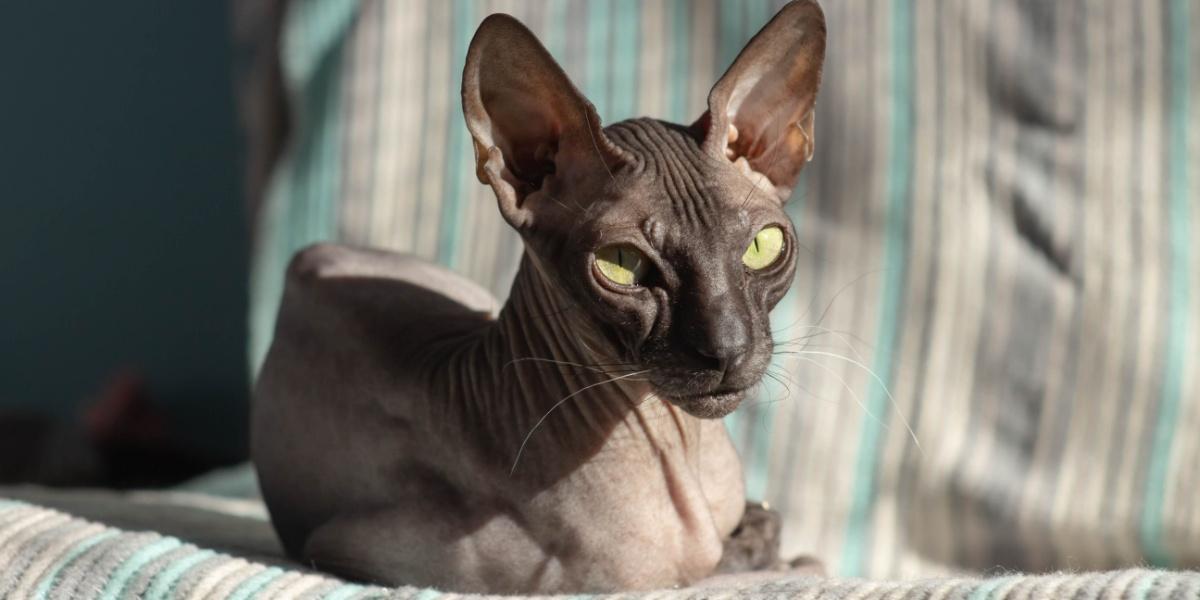
Viachaslau Herostratos / Shutterstock.com
Russia is the birthplace of many beautiful and endearing cat breeds. Most people are familiar with some of the more popular Russian cat breeds, including the silver-hued Russian Blue and longhaired Siberian cat, but some Russian cat breeds are quite rare. Read on to meet 10 Russian cat breeds and find out what makes them special and unique.
#1 Donskoy
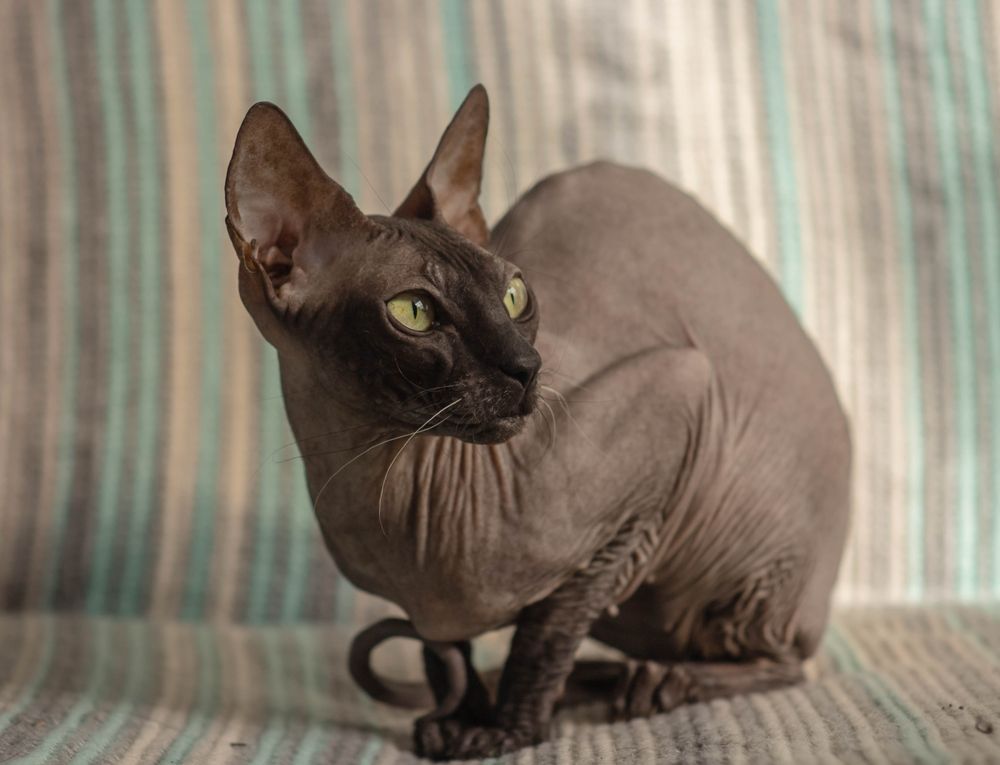
Viachaslau Herostratos / Shutterstock.com
The Donskoy is a unique hairless cat breed with a varied and sometimes shape-shifting coat. The Donskoy breed originated in Russia when a professor rescued a stray kitten in 1987. The kitten, named Varvara, began losing her hair as she grew older despite her owner’s attempts to treat the hair loss. Later, Varvara had a litter of kittens, some that had hair and some that were hairless. The kittens that were born with hair began losing their coats, just like their mother did when she was a kitten.
Although some people thought the kittens were unhealthy, a cat breeder named Irina Nemikina saw value in the unique hair coat, and used one of Varvara’s kittens to develop a new breed. Originally called the Don Sphynx, the breed was later renamed Donskoy. The breed is recognized by The International Cat Association (TICA) with full championship status, which allows cats to compete in cat shows for titles.
Some Donskoy kittens are born hairless (this coat type is called rubber bald). Some kittens are born with very soft, fine hair (this coat type is called flocked). A flocked Donskoy cat might stay that way, but sometimes a flocked Donskoy’s fine coat falls out ad they become hairless. A third type of Donskoy coat is called velour. Velour Donskoy kittens have a wooly coat and a bald spot on their head when they are born. Within the first year of life, this wooly coat falls out and the cat becomes bald, although some velour Donskoy retain a small amount of hair on their face, legs, and tail. The fourth type of Donskoy coat is called brush, which is a partially hairless coat.
Donskoy cats are friendly and outgoing. The breed is active and needs a lot of companionship and attention from their human family. Regardless of coat type, most Donskoy shed very little or not at all. Hairless Donskoy need weekly baths to remove oils from the skin. They sometimes grow hair in wintertime, though this is sparse and doesn’t do much to keep them warm.
#2 Kurilian Bobtail
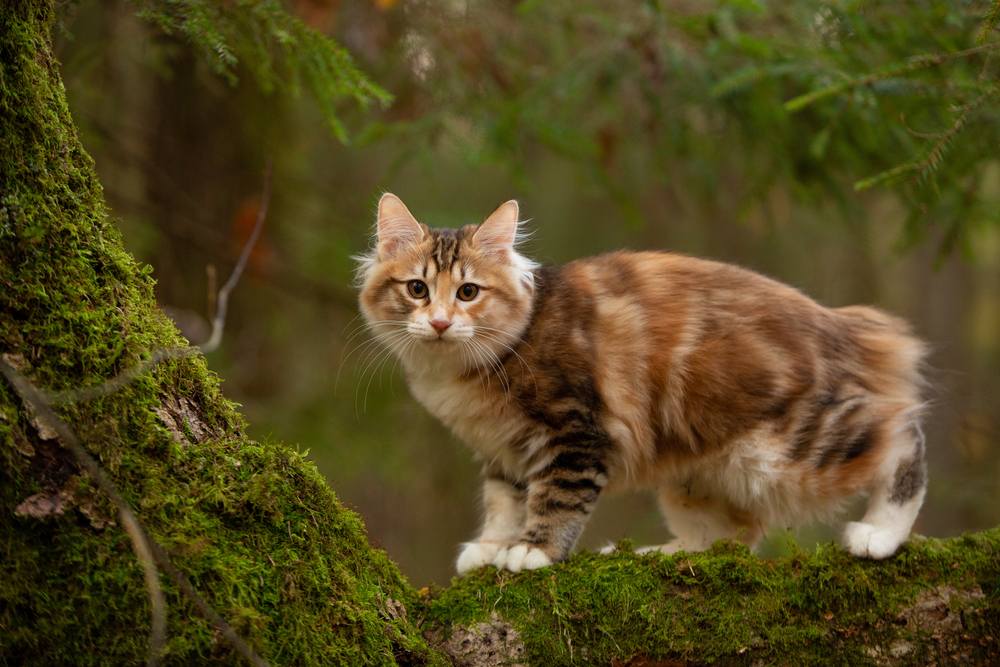
Natalia Fedosova / Shutterstock.com
The Kurilian Bobtail developed naturally on the Russian Kamchatka peninsula and Russia’s Sakhalin and Kuril islands. These cats have been known for at least 200 years, possibly longer. In the mid-1900s, visiting explorers who were taken with these unique cats brought specimens back with them to central Russia where they became indispensable dispatching rodents. Although the breed spread to Europe, it’s very rare in North America. The Kurilian Bobtail is recognized by TICA with full championship status, which allows cats to compete in cat shows for titles.
The medium to large-sized Kurilian Bobtail cat looks wild thanks to its substantial boning and pom-pom bobtail. The natural bobtail has between two to 10 vertebrae, so the tail varies in length from about half an inch to about 5 inches long. The kinky tail can curve in different directions unique to each cat, causing varying tail types. In the breed standard, these are described as “snag,” “spiral,” or “whisk.”
Despite its wild looks, Kurilian Bobtail is very gentle, friendly, and playful. They bond closely with their favorite people and love to cuddle. The breed may have a short coat or a semi-long hair coat. Regardless of length, the flat-lying coat is soft, fine, and silky.
#3 Peterbald
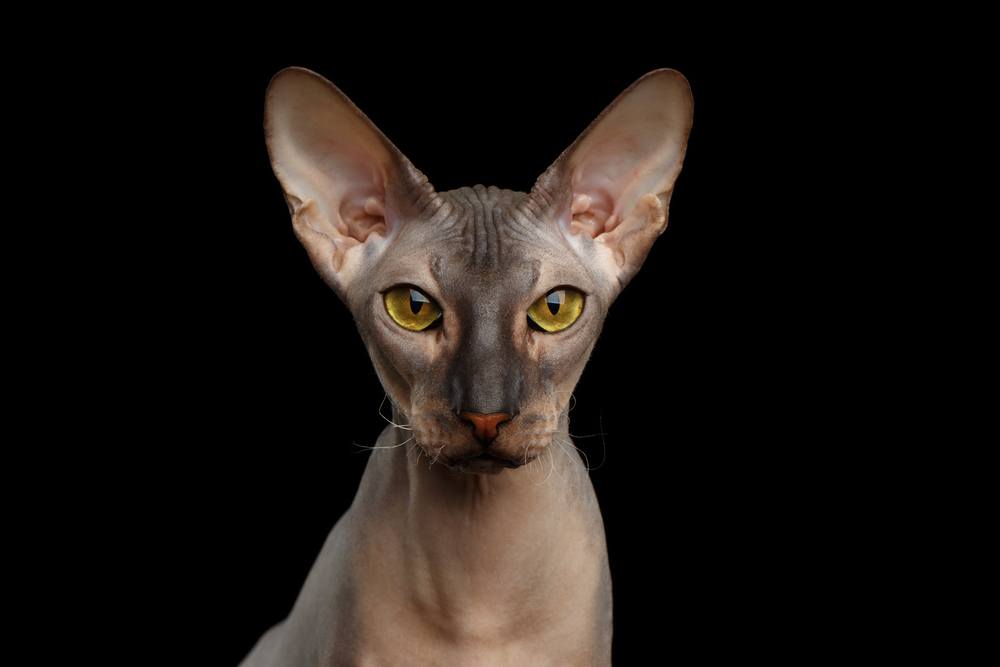
Seregraff / Shutterstock.com
Russia has given the cat world not one, but two native hairless breeds. In addition to the Donskoy, the Peterbald is also hairless or near hairless, although some Peterbalds lack the gene responsible for hairlessness and are fully coated. The Donskoy and the Peterbald are closely related. In fact, the Donskoy was crossed with an Oriental Shorthair cat to create a new breed called the Peterbald. The breed inherited its wedge-shaped head from the Oriental. The Peterbald is recognized by TICA with full championship status.
Like the Donskoy, the Peterbald’s hair coat varies quite a bit. Naked Peterbald cats are completely hairless. Chamois cats are nearly hairless, with a very fine hair like peach fuzz. Flock cats have a fine to slightly dense soft coat that’s like velour or velvet. Brush cats have a sparse wiry coat that’s irregular in texture and may be dense, wiry, short, wavy or kinky. With brush coats, the skin might be visible through the coat. Cats with a straight coat do not have the gene for hair loss or hairlessness. Straight coats look like typical shorthair coats in other breeds.
Some Peterbald kittens are born hairless and remain hairless. Some Peterbald kittens are born with hair and lose it later. Some kittens are born with hair and keep it. Hairless and nearly hairless Peterbalds shed very little or not at all. Hairless Peterbalds need baths every other week to keep the skin oils under control.
The Peterbald is an exceptional companion. Intelligent and playful, these cats are both active and cuddly. They are friendly with people and pets of all kinds, and confident enough to enjoy traveling. As long as they are with their favorite people, the Peterbald is happy.
#4 Russian Blue
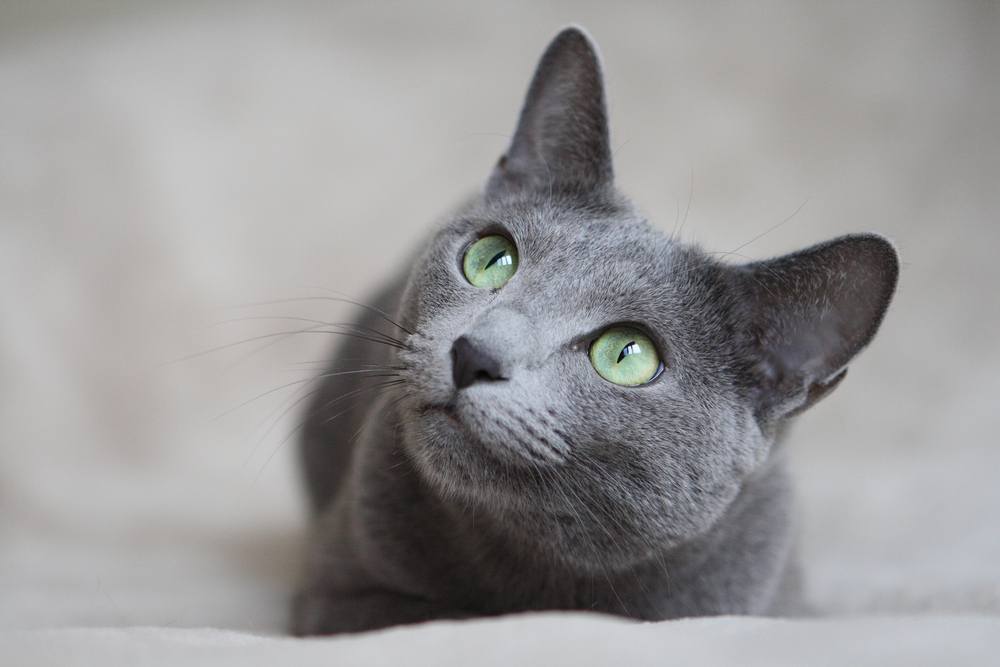
Bildagentur Zoonar GmbH / Shutterstock.com
The Russian Blue cat is one of the most popular and recognizable of all the Russian cat breeds. It’s also a very old breed, one that was exhibited at the very first cat shows in England in the late nineteenth century. Back then these cats were known by the name Archangel cat after the Archangel Isles, and they were shown with other blue cats in a class called Foreign Blue. As with many breeds, the Russian Blue nearly became extinct after World War II, but thanks to the dedication of breed fanciers, the breed was restored and refined into the modern Russian Blue known today. The Russian Blue is recognized by the CFA and TICA with full championship status, which allows cats to compete in cat shows for titles.
The Russian Blue is a medium-sized cat. It is always a solid, even, bright blue (gray) with lighter shades preferred over darker shades. Two of the breed’s characteristics combine to make it one of the most visually stunning cat breeds. The coat’s silver-tipped guard hairs (the longer hairs of the outercoat), give the Russian Blue a striking, silvery sheen, almost appearing to sparkle. The short, plush, silvery blue coat combined with the breed’s emerald green eyes make the Russian Blue like no other cat.
Russian Blues are gentle, quiet, affectionate, and cuddly with those they know and love, but this breed can be standoffish with new people. They are active and curious, and benefit from extra enrichment in the home, such as opportunities for climbing, perching, and scratching.
#5 Siberian
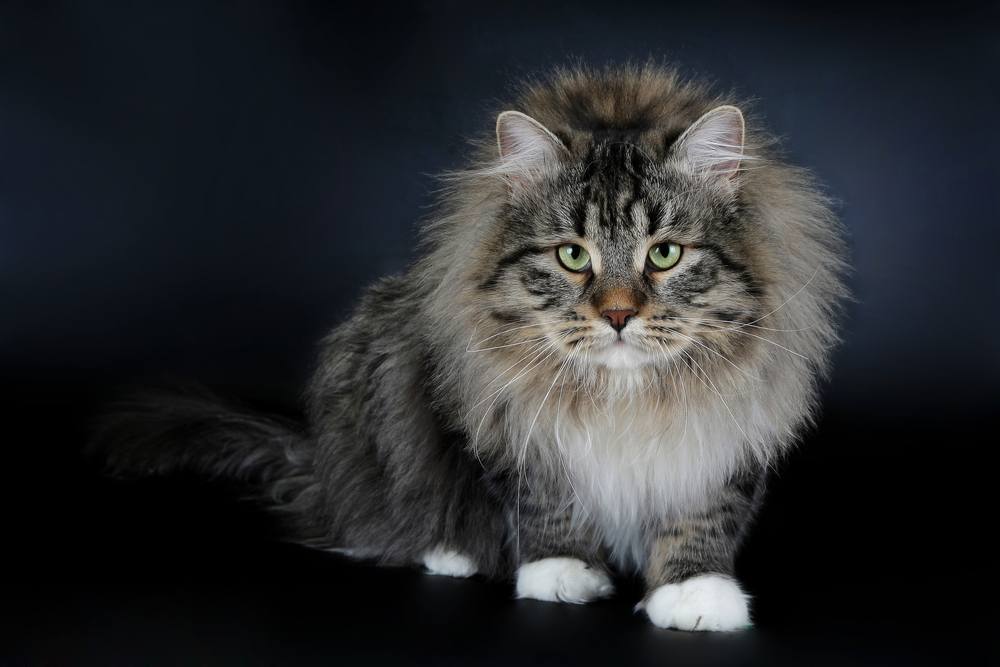
dien / Shutterstock.com
The medium to large-sized Siberian cat is an ancient breed that developed naturally in northern Russia as far back as 1000 AD, and Siberians even make appearances in Russian fairy tales. Like the Russian Blue, Siberian cats were exhibited at the very first cat shows in the 1870s, but the breed wasn’t introduced to the United States until the 1990s. The Siberian is recognized by the CFA and TICA with full championship status, which allows cats to compete in cat shows for titles.
The Siberian cat has a solid, muscular body. Unlike most longhaired cats, which have single or double coats, the Siberian has a unique triple coat with three layers of hair—a long, coarse or soft outercoat, a dense medium-length middle coat, and a soft undercoat. These extra layers help to keep the Siberian warm during Russia’s cold winters. As added protection from the elements, the coat is even waterproof. Despite all these layers of fur, the Siberian’s coat naturally stays tangle-free, so it needs brushing only a few times a week.
Affectionate and outgoing, the Siberian gets along great with most adults, kids, and pets, including other cats and dogs. Although no cat is truly hypoallergenic, some people with cat allergies can live comfortably with a Siberian cat. If you have allergies, it’s important to spend time indoors with adults of any cat breed you’re considering bringing home.
#6 Toybob
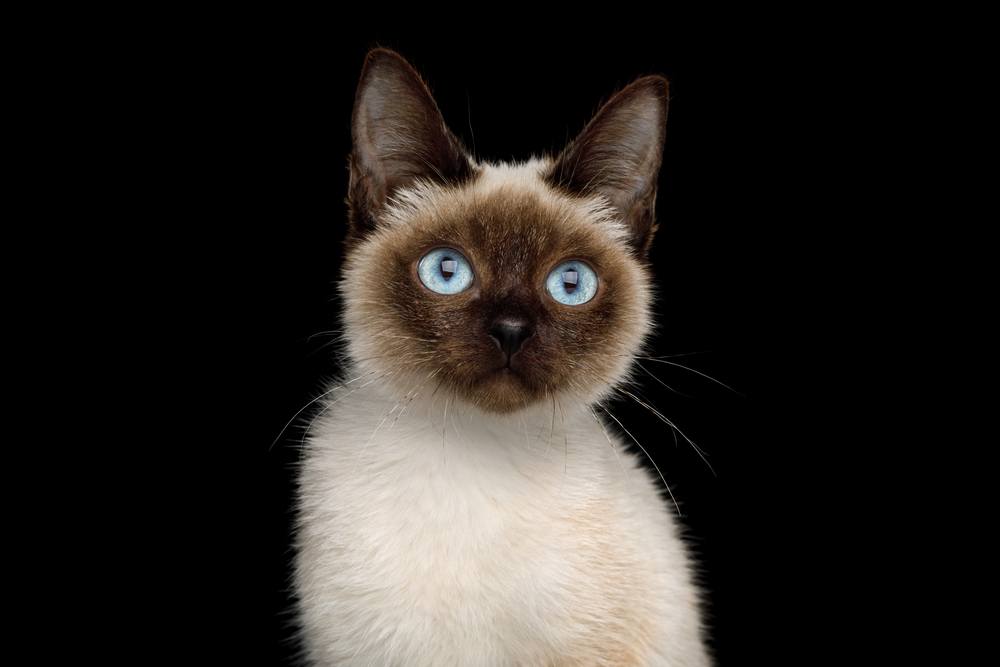
Seregraff / Shutterstock.com
Breed Overview
- ORIGIN: Russia
- ADULT WEIGHT: 3-7 pounds
- GROUP: Medium-short haired
- HEIGHT: 7″-10″
- LIFE SPAN: 12-16 years
- PRICE: $500-$1500
The Toybob is a very small cat that retains the look of a kitten as an adult. It is not a dwarf breed, and has proportionally balanced features, with medium muscularity and medium bone structure. Toybobs have a natural bobbed tail that can be straight or have kinks and curves.
The breed was developed in Russia in the late 1980s from seal point stray cats that looked a lot like Siamese with bobtails. When two such cats were bred together, one of the kittens was surprisingly small. This cat went on to become the foundation of the Toybob breed.
The Toybob is a provisional breed with the CFA. It is listed as a preliminary new breed with TICA, which means the Toybob can compete in TICA-sanctioned cat shows, but cannot earn any titles or points while it works toward eligibility for championship status.
The Toybob can be any color, and may have short hair or long hair. Both coats are soft and slightly plush, with the longhair coat somewhat softer than the short version. The Toybob temperament is quiet, gentle, affectionate, and cuddly. They are active and playful, and have no limitations due to their smaller size.
Other Russian Cat Breeds
A few other Russian breeds are quite rare with limited information about them available. These Russian felines include:
#7 Karelian Bobtail
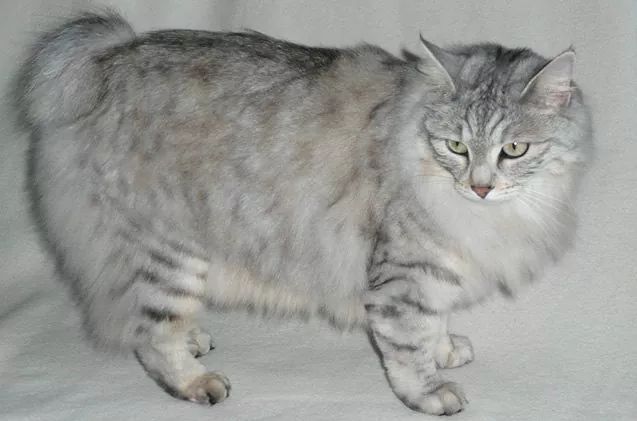
Image Credit: https://www.petguide.com/breeds/cat/karelian-bobtail/
Breed Overview
- ORIGIN: Russia/Finland
- ADULT WEIGHT: 7-15 pounds
- GROUP: Medium-sized
- HEIGHT: 8″-12″
- LIFE SPAN: 12-15 years
- PRICE: $800-$2000
The Karelian Bobtail (not to be confused with the fully established Kurilian Bobtail), is a natural bobtailed breed said to have originated in the Russian Republic of Karelia.
#8 Mekong Bobtail
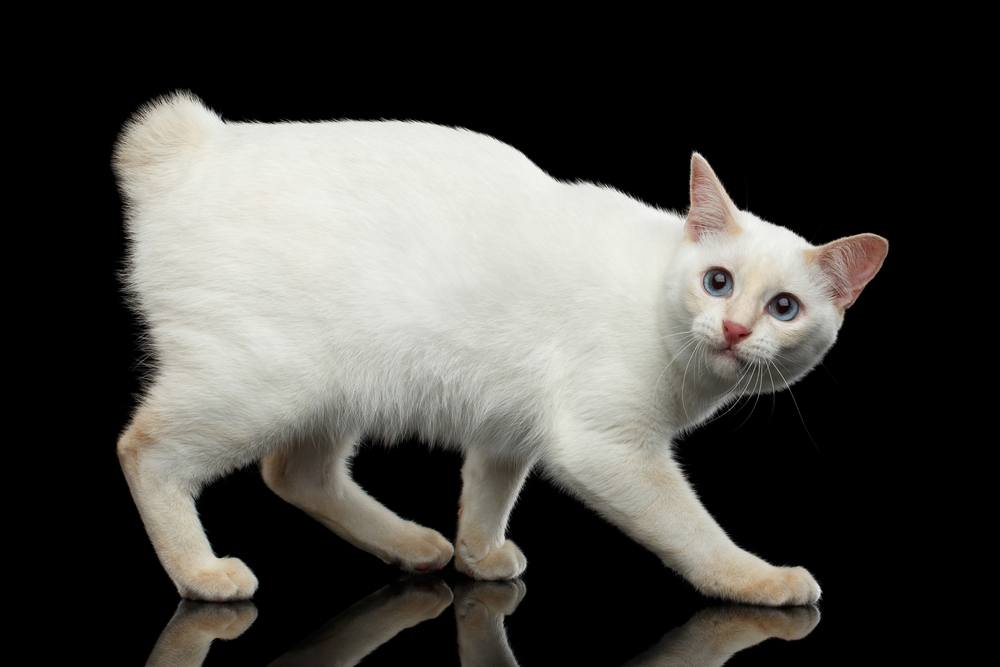
Seregraff / Shutterstock.com
Breed Overview
- ORIGIN: Russia/Southeast Asia
- ADULT WEIGHT: 6-10 pounds
- GROUP: Medium-sized
- HEIGHT: 8″-12″
- LIFE SPAN: 12-15 years
- PRICE: $500-$1500
The Mekong Bobtail is an experimental breed developed in Russia using cats from Southeast Asia, specifically Thailand (the Thai Bobtail).
#9 Neva Masquerade
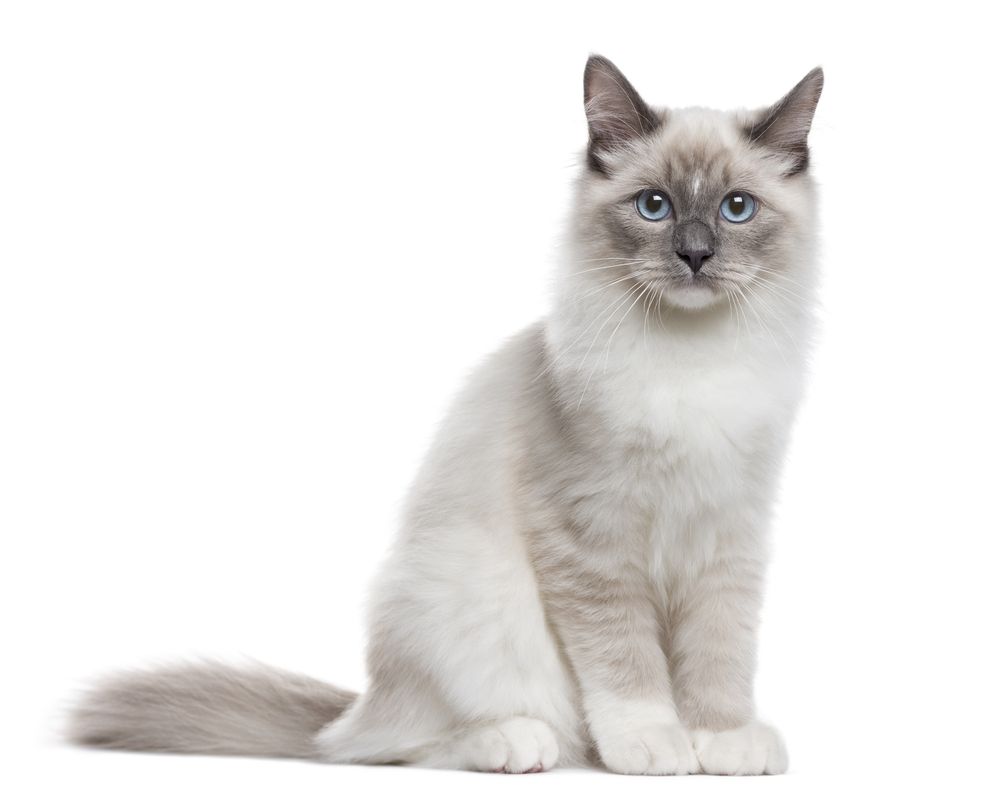
Eric Isselee / Shutterstock.com
Breed Overview
- ORIGIN: Russia/Southeast Asia
- ADULT WEIGHT: 8-17 pounds
- GROUP: Medium to Large-sized
- HEIGHT: 9″-11″
- LIFE SPAN: 12-15 years
- PRICE: $800-$2000
The Neva Masquerade cat is a rare colorpoint variety of Siberian cat, named for the Neva River in Siberia.
#10 Ussuri
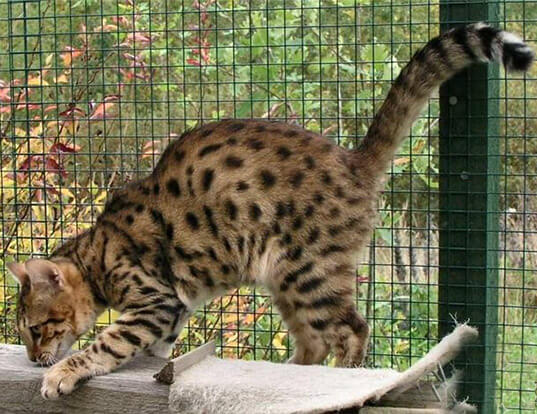
Image Credit: https://www.worldlifeexpectancy.com/cat-life-expectancy-ussuri
Ussuri cats are a naturally occurring hybrid of domestic cats and a small wild cat species, possibly the Amur leopard or an Amur Forest cat.
Where to Find Russian Cat Breeds
Some Russian cat breeds are common and others are rare. It would be difficult to find a rare Russian breed like the Donskoy, Peterbald, or Toybob in rescue, but if you’re hoping to bring home one of the popular Russian cat breeds like the Russian Blue or Siberian, you might have luck adopting one from an animal shelter or cat rescue group in your area. You can also search for a Russian Blue through an adoption site like Petfinder or Adopt a Pet.
Finding a kitten might take some time, especially if you want one of the less-common Russian cat breeds. Before choosing a breeder, do some research to make sure they are breeding healthy kittens in an ethical way. Responsible breeders avoid breeding adult cats with any health issues so they don’t pass them on to the kittens. Reputable breeders also provide proper care and adequate living conditions for their adult breeding cats and kittens. To get started, visit the breeder referral pages of the Cat Fanciers’ Association and The International Cat Association.



